- “Curved mobiles” typically refer to smartphones that have a curved display.
- These displays are designed to bend or curve at the edges, offering a sleek and unique aesthetic.
- There are two primary types of curved displays found in smartphones:
- Curved Edge Displays:
- These smartphones have screens that curve at the edges, creating a smooth transition between the screen and the sides of the device.
- Samsung’s Galaxy Edge series is a prominent example of this design, featuring displays that wrap around the sides of the phone.
- Foldable Displays:
- Some smartphones offer foldable or bendable screens that can physically bend without damaging the display.
- These devices can fold, offering a larger screen when needed and a more compact size for convenience.
- Manufacturers like Samsung, Huawei, and Motorola have introduced foldable smartphones.
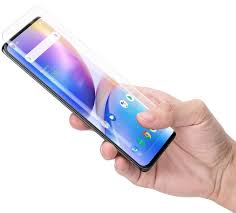
What is the world’s first curved phone?
- Samsung Galaxy Round is an Android phablet smartphone produced by Samsung Electronics.
- Unveiled in October 2013, it is a curved variation of the Galaxy Note 3
- It was distinguished by being the first commercially produced smartphone to feature a curved display.
- It has some shortcomings
- Unwanted touches when using the phone one-handed without a case.
- Gets slippery at times without a case.
- Less available options and expensive screen protectors for curved displays.
- Chances of glass or display crack are higher if dropped with a case

Advantages of Curved Phones
- Curved phones, characterized by screens that have a slight curve, have been a trend in smartphone design.
- They come with their own set of advantages and disadvantages:
Aesthetics:
- Curved screens can provide a sleek and futuristic appearance, making the phone look more visually appealing.
- This design can give the device a premium and distinctive feel.
Improved Grip:
- Some users find that the curved edges make it easier to hold the phone, reducing the likelihood of accidentally dropping it.
- The curved design can create a more comfortable and secure grip.
Enhanced Immersive Experience:
- The curvature of the screen can enhance the immersive experience when watching videos or playing games.
- It can create a more engaging and visually stimulating viewing experience.
Unique Features:
- Manufacturers often introduce specific features that are exclusive to curved phones, such as edge-based controls, notifications, or additional functionality, which can be convenient for some users.
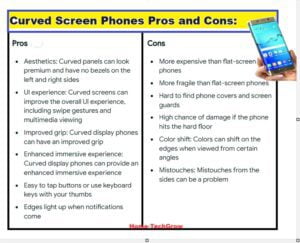
Disadvantages of Curved Phone
Increased Fragility:
- Curved screens are more susceptible to damage because the curved edges are more vulnerable to cracks and scratches.
- Finding suitable screen protectors can be challenging, and repairing curved screens can be expensive.
Accidental Touches:
- The curved edges can lead to unintentional touches or interactions with the screen, causing accidental app launches or function activations.
- This can be frustrating for users.
Limited Accessory Compatibility:
- Finding compatible cases, screen protectors, or other accessories can be more challenging due to the unique design of curved phones.
- Users may have fewer options for protecting and customizing their devices.
Higher Cost:
- The manufacturing process for curved displays is more complex and expensive, which often results in higher costs for these devices.
- Users may need to pay a premium for the curved design.
Distortion and Glare:
- Curved screens can sometimes cause distortion or glare, which can affect the viewing experience negatively in certain lighting conditions or when viewing content at certain angles.
Less Durability:
- Curved screens are generally less durable than flat screens, as the curved edges are more prone to damage.
- This can lead to higher repair costs and a shorter overall lifespan for the device.
- While curved phones have their unique appeal and can offer certain advantages, they also come with notable disadvantages, especially in terms of durability and cost.
- The trend in smartphone design has shifted away from curved displays in recent years, with manufacturers focusing on other innovations and improvements in smartphone technology.
Popular Curved Phones
Samsung Galaxy S23 Ultra:
- The Samsung Galaxy S23 Ultra is the company’s flagship phone for 2023
- it features a stunning 6.8-inch curved AMOLED display
- It has a powerful Snapdragon 8 Gen 2 processor,

- 12GB of RAM, and up to 1TB of storage.
OnePlus 11 Pro:
- The OnePlus 11 Pro is another flagship phone with a curved display.
- Display: a 6.7-inch AMOLED display
- Refresh Rate: 120Hz refresh rate
- Snapdragon 8 Gen 2 processor
- Memory: 12GB of RAM, and up to 512GB of storage.
Google Pixel 7 Pro:
- Features a 6.7-inch curved OLED display.
- The phone also has a custom Tensor chip,
- Memory: 12GB of RAM, and up to 512GB of storage.
Vivo X90 Pro:
The Vivo X90 Pro is a high-end phone with a curved display.
Xiaomi 13 Ultra:
- The Xiaomi 13 Ultra is a premium phone with a curved display.
- It comes with a 6.78-inch AMOLED display with a 120Hz refresh rate
- Snapdragon 8 Gen 2 processor
- 12GB of RAM, and up to 512GB of storage.
Oppo Reno 10 Pro+:
- The Oppo Reno 10 Pro+ is a mid-range phone with a curved display.
- It comes with a 6.7-inch AMOLED display with a 120Hz refresh rate
- MediaTek Dimensity 8200 processor
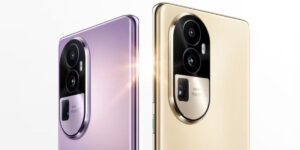
- Memory: 12GB of RAM, and up to 512GB of storage.
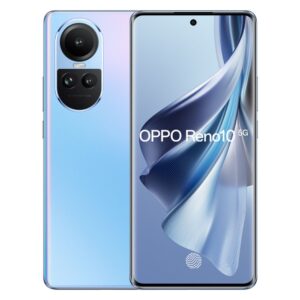
Lava Agni 2:
- The Lava Agni 2 is a budget-friendly phone with a curved display.

Motorola Edge 40:
- The Motorola Edge 40 is a mid-range phone with a curved display.
- It comes with a 6.55-inch OLED display
- 144Hz refresh rate, a Snapdragon 7 Gen 1 processor,
- 12GB of RAM, and up to 256GB of storage.
Vivo V27 Pro:
- The Vivo V27 Pro is a mid-range phone with a curved display.
- It comes with a 6.78-inch AMOLED display
- 120Hz refresh rate
- MediaTek Dimensity 9200 processor
- 12GB of RAM, and up to 256GB of storage.
Xiaomi 13 Pro:
- The Xiaomi 13 Pro is a premium phone with a curved display.
- It comes with a 6.78-inch AMOLED display with a 120Hz refresh rate
- Snapdragon 8 Gen 2 processor
- 12GB of RAM, and up to 512GB of storage.
These are just a few of the many popular curved mobile phones on the market. When choosing a curved phone, it is important

Is Curved Phones good for eyes
- Curved phones offer some visual benefits that can make them gentler on the eyes in certain conditions, but they also come with potential downsides.
- Here’s a look at how curved screens impact eye comfort and strain:
Benefits of Curved Phones for Eye Comfort
Reduced Distortion at Center:
-
- A curved screen can make content at the center of the display slightly easier to focus on, as the curve can bring content edges closer to the user’s natural line of sight.
- his can reduce the need for eye movement when viewing centered content.
Immersive Viewing Experience:
-
- Curved displays can create a more immersive effect, which might reduce eye strain in certain types of content like video or images by making the experience feel more natural and “wrapped.”
- This may help reduce the sensation of strain caused by sharp screen edges.
Natural Peripheral View:
- The curvature may make peripheral content appear more accessible, potentially providing a softer experience for the eyes as the content appears to follow the natural contour of vision.

Downsides of Curved Phones for Eye Comfort
- Increased Glare: Curved screens are prone to glare, especially along the edges, because of how light reflects off the curved surface. This can create distracting bright spots or reflections, causing the eyes to work harder, which can lead to discomfort or eye strain.

Protect eyes from blue light in night - Distorted Edges: Some users find the edges of curved screens appear slightly warped or distorted, which can make reading text or viewing detailed content uncomfortable, particularly if you need to frequently view edge content.
- Extra Light Reflection: The curve increases the surface area exposed to ambient light, which can result in more reflections. Reflections create contrast changes on the screen, forcing the eyes to adjust and potentially leading to fatigue, especially under bright or uneven lighting.
- Unintended Peripheral Distractions: If the screen displays notifications or moving elements along the edges, it can distract the eyes and cause subtle but constant shifts in focus. This can lead to faster eye fatigue in people who are sensitive to visual distractions.
- Screen Magnification Issues: The curved edges might slightly distort content at the edges of the screen, particularly on larger curved phones. This can create slight discomfort when focusing on the edges repeatedly or reading detailed content.
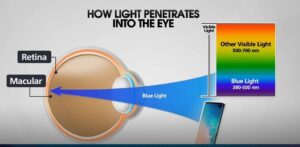
Tips to Minimize Eye Strain on Curved Phones
- Adjust Brightness: Keep brightness at a comfortable level to reduce glare, especially in low light.
- Use Eye Comfort Mode: Many phones have “blue light filter” or “eye comfort” modes, which reduce blue light emission and can be easier on the eyes during prolonged use.
- Manage Edge Notifications: Limit notifications on the screen edges to reduce visual distractions.
- Use Matte Screen Protectors: A matte screen protector can help reduce glare and reflections on curved surfaces.
While curved phones can offer an appealing viewing experience, users sensitive to glare or edge distortion might find these displays more challenging for extended use.
Major Issues with Modern Curved Phones
Summary of Pros and Cons of Curved Phone
- Curved display phones have become popular for their unique aesthetic and immersive experience. Here are some pros and cons:
Pros of Curved Phone
- Aesthetic Appeal:
- Sleek Design: Curved displays often look more modern and stylish, giving the phone a premium feel.
- Immersive Experience: The curved edges can enhance the visual experience, making content look more immersive.
- Enhanced Features:
- Edge Functionality: Some curved displays offer additional features like edge panels, which provide quick access to apps, notifications, and tools.
- Reduced Bezels: Curved edges often lead to thinner bezels, maximizing screen real estate.
- Improved Grip:
- Ergonomics: The curved design can make the phone more comfortable to hold, reducing hand fatigue during extended use.
Cons of Curved Phone
- Durability Concerns:
- Fragility: Curved screens are more prone to damage from drops due to their exposed edges.
- Screen Protectors: Finding compatible screen protectors can be challenging, and they may not offer complete coverage.
- Usability Issues:
- Accidental Touches: The curved edges can lead to unintentional touches, which can be frustrating during use.
- Distorted Content: Some users may find that content appears slightly distorted at the edges, affecting the viewing experience.
- Cost:
- Higher Price: Curved display phones tend to be more expensive due to the advanced manufacturing process and design.
- Repair Costs: Repairing a curved display can be costlier compared to a flat screen.
- Compatibility:
- Accessories: Finding compatible accessories, like cases and screen protectors, can be more difficult and expensive.
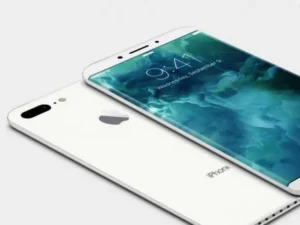
Why tablet are not curved ?
- Curved screens haven’t been widely adopted in tablets for several reasons, largely due to the practical limitations and usability needs that come with larger displays. Here’s a breakdown of why tablets typically don’t have curved screens:
Display Fragility and Durability
- Increased Risk of Damage: Larger curved screens would be highly prone to breakage and cracking, especially at the edges. Tablets are often used by families, including children, and are more likely to experience drops or bumps than phones, so durability is a critical factor.
- High Repair Costs: Repairing curved displays, particularly on a larger surface like a tablet, would be more challenging and costly than for phones. This would increase overall maintenance costs for consumers.
Reduced Portability Needs
- Less Need for Compactness: Tablets are already larger and less portable than smartphones, so the curved-screen trend—partly driven by the desire to maximize screen space on smaller devices—is less relevant. Users prefer a stable, flat screen that they can view from different angles without distortion or light reflection.
Unintended Touch Issues
- Unwieldy Edge Sensitivity: Curved edges would make accidental touches and palm rejections a bigger issue on tablets, especially since people hold tablets differently than they do phones. Tablets are often held with two hands or placed on surfaces, which could easily activate unintended touch inputs on curved edges.
Viewing Experience and Content Usage
- Consistent Screen Quality Needed: Tablets are often used for tasks like reading, drawing, and work, where screen quality consistency is important. The curved edges can distort or warp content, which might be distracting or uncomfortable when viewing text, photos, or design projects on larger screens.
- Professional Applications: Many users, such as artists and professionals, need flat, accurate displays for work. Curved edges could interfere with drawing or design, where edge-to-edge screen precision is important.
Cost and Manufacturing Challenges
- Increased Production Cost: Producing a large, curved screen for a tablet would be more complex and costly, and manufacturers might not find it cost-effective given the limited demand for this feature in tablets.
- Higher Retail Prices: The added production costs would likely increase the retail price, making tablets less affordable and potentially limiting their appeal.
Weight and Thickness Constraints
- Heavier and Bulkier: Curved glass can add to the weight and thickness of the device, as it requires additional layers of protection and reinforcement. Tablets are already larger and heavier than phones, so added weight or bulk from a curved screen would affect portability and comfort.
Limited Benefit to User Experience
- Fewer Benefits of Curved Edges on Large Screens: The immersive effect of curved edges is more noticeable on smaller devices like phones. For tablets, the same effect is much less pronounced since users are generally further from the screen and look at it from a wider field of view. Curved edges don’t significantly improve the experience on a large display.
For these reasons, manufacturers have chosen to keep tablet screens flat, as this provides better durability, usability, and cost-effectiveness for a device with a larger form factor.
Conclusion:
- Curved display phones offer a mix of aesthetic appeal and enhanced features but come with trade-offs in terms of durability, usability, and cost.
- Users should weigh these factors based on their preferences and needs before deciding on a curved display phone.
-
Worth It or Not?
- Yes, it’s worth it if you value design, aesthetics, and a more immersive experience, and are willing to pay a premium and take extra care of your device.
- No, it may not be worth it if you’re concerned about durability, accidental touches, or prefer a more practical design with fewer risks of damage.
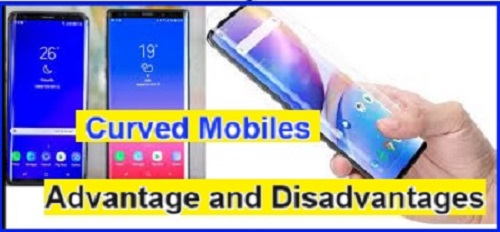
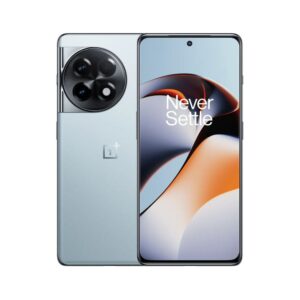
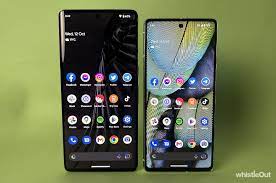
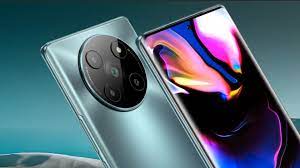

Great insights on curved phones! I appreciate the detailed breakdown of both the advantages and disadvantages. It really helps weigh the pros and cons before making a purchase. I love the aesthetics of curved screens, but I also see the drawbacks you mentioned, especially regarding durability. Thanks for sharing!